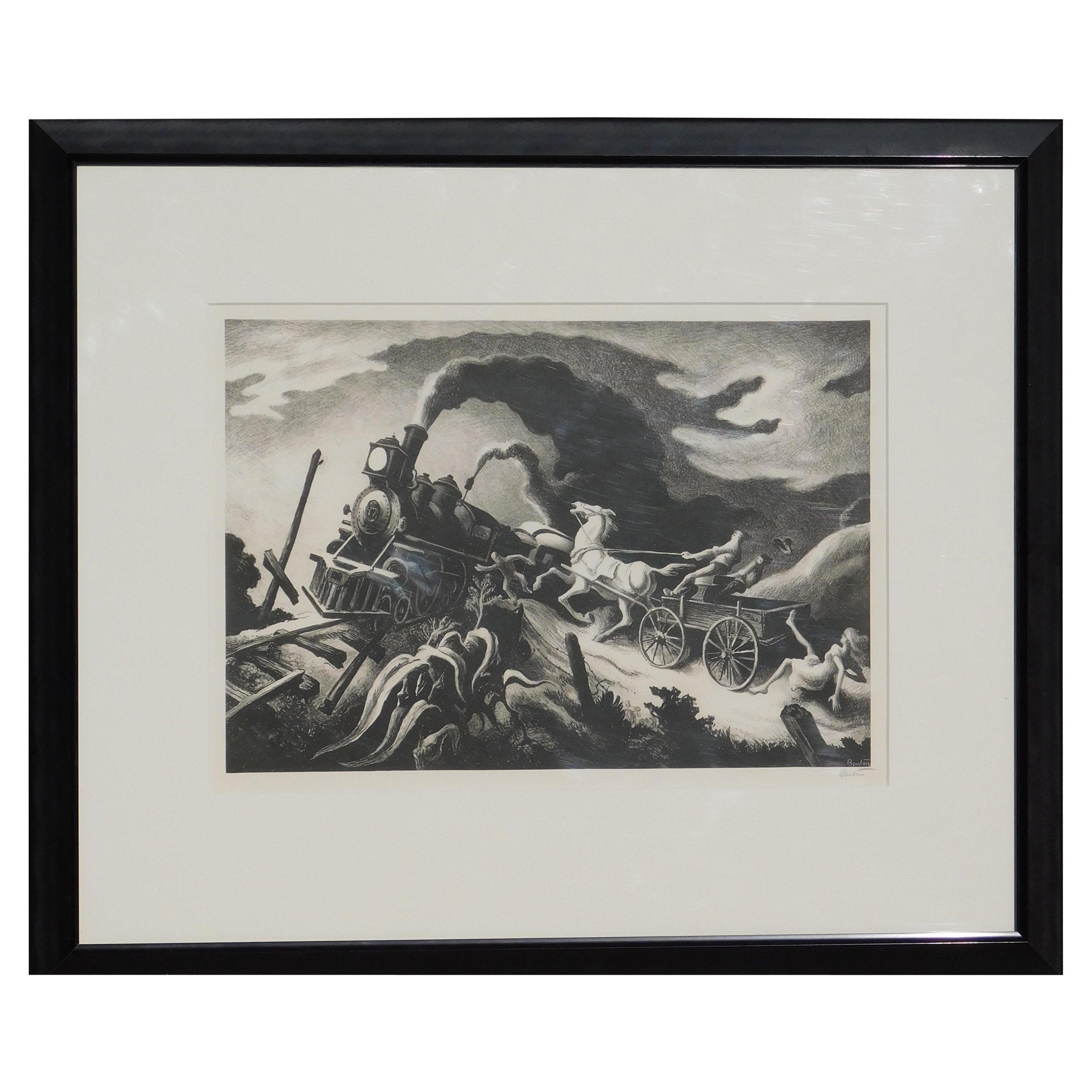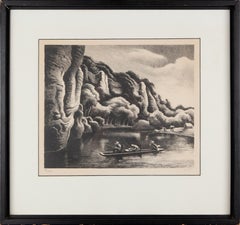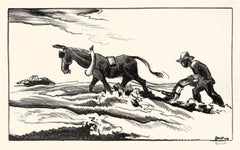Questions & Answers
Our trusted network of 1stDibs sellers answer common questions
Where is Thomas Hart Benton's famous mural?
1 Answer

Thomas Hart Benton's famous mural is located on the third floor of the Missouri State Capitol building in Jefferson City, Missouri. Called A Social History of Missouri, the 100-foot by 16-foot mural depicts the highs and lows of the history of Missouri up until its creation in 1936. All in all, the mural shows 235 faces that include enslaved Black people, farmers, industrial workers and even some members of the gang of Jesse James. On 1stDibs, explore a collection of Thomas Hart Benton art.
1stDibs ExpertJanuary 27, 2025
Related Questions
- What is a WPA mural?1 Answer
- What is a mural in art?1 Answer
- What is Marimekko famous for?1 Answer
- What is Longines famous for?1 Answer
- What is Hackney famous for?1 Answer
Shop for Thomas Hart Benton Art on 1stDibs
Making Camp
By Thomas Hart Benton
Located in Columbia, MO
Thomas Hart Benton (American, 1889 - 1975) was a painter, muralist, and printmaker whose sinuous, rhythmic style came to define the Regionalist movement. His paintings and lithograph...
Category
20th Century American Modern Landscape Prints
Materials
Lithograph
'Plowing It Under' — WPA Era American Regionalism
By Thomas Hart Benton
Located in Myrtle Beach, SC
Thomas Hart Benton, 'Goin' Home', lithograph, 1937, edition 250, Fath 14. Signed in pencil. Signed in the stone, lower right. A fine, richly-inked impression, on off-white, wove pape...
Category
1930s American Realist Figurative Prints
Materials
Lithograph
Mural Study for "History of Water" American Scene Modernism Social Realism WPA
By Thomas Hart Benton
Located in New York, NY
Mural Study for "History of Water" American Scene Modernism Social Realism WPA
Thomas Hart Benton (American, 1889-1975)
"Water Story" (Study for The History of Water)
Tempera and o...
Category
1930s American Modern Figurative Paintings
Materials
Oil, Egg Tempera, Board
Forward Pass
By Thomas Hart Benton
Located in New York, NY
Lithograph on wove paper, 1972. Signed by the artist in pencil, lower right. Inscribed "Ed. 250" in pencil, lower left. Published by Associated American Artists, New York.
Catalog...
Category
1970s American Realist More Prints
Materials
Lithograph
SLOW TRAIN THROUGH ARKANSAS
By Thomas Hart Benton
Located in Portland, ME
Benton, Thomas Hart (American, 1889-1975 SLOW TRAIN THROUGH ARKANSAS. Fath . Lithograph, 1941. Edition of 250 published by Associated American Artists (A.A.A.). 9 7/8 x 12 inches (im...
Category
1940s Landscape Prints
Materials
Lithograph
Prodigal Son
By Thomas Hart Benton
Located in London, GB
A man raises his hand to his chin, his neck tilted and face turned to look at a dilapidated farmhouse, barely held together by planks of wood and exposed to the elements. Behind him ...
Category
1930s American Modern Landscape Prints
Materials
Lithograph

